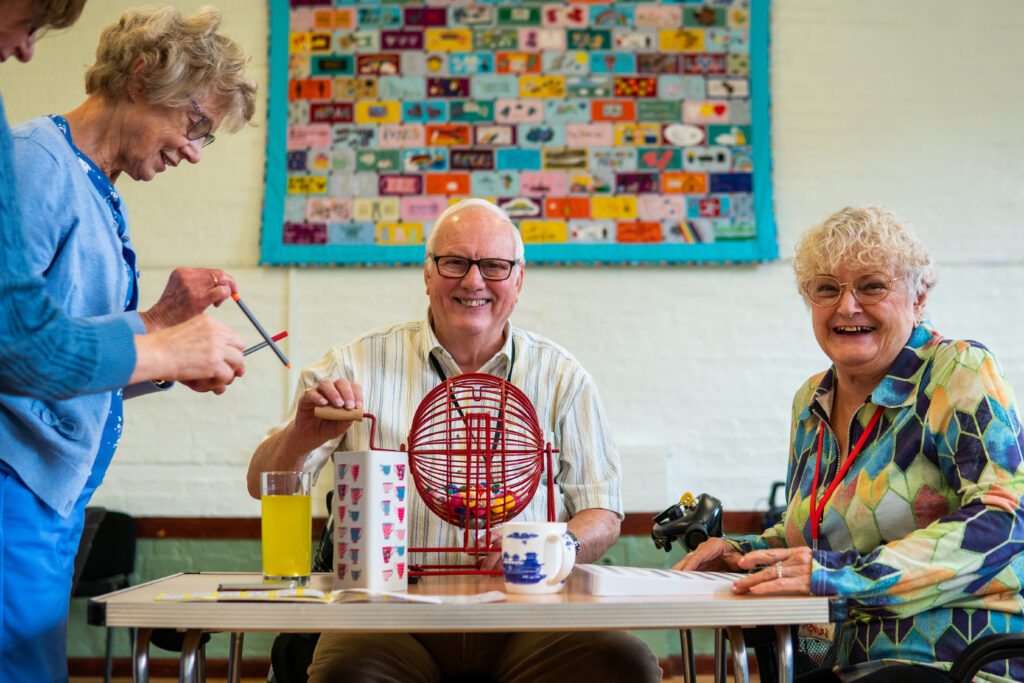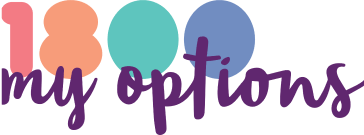
Physical activity and exercise in social context
Physical activity and moving our bodies is one of the best things we can do to remain well as we age. Physical activity has many benefits including decreasing our risk of chronic disease, disability and falls, improving our physical function, social connectedness, mental health and our overall wellbeing.
Society places pressure on us and makes us feel like we need to exercise to look a certain way. For many of us, this can impact our self-esteem and body image (see section on body image), negatively impacting our desire to participate in physical activity.
We want to highlight that physical activity is far from this: the focus shouldn’t be on how we look. It’s about improving our health and wellbeing and having fun and staying connected while we do it. It comes in many different forms, from dancing, walking in a park, or playing a team sport, to gardening, doing household chores and participating in community groups.
Watch this video from Exercise Right, which discusses the importance of exercising for good mental health.
Women face additional challenges to being physically active as we age, and this is reflected in the data: in Australia, 39% of women over 55 years and 53% of women over 65 years do not participate in regular physical activity. Evidence shows that participation in sport and physical activity declines as we get older.
It’s important to understand that the reasons behind this are caused by societal issues and gender inequalities. Women are more likely to have greater caring responsibilities, which means a lack of time or energy to participate in physical activity. Women are more likely to be reluctant to participate in physical activity due to a fear of judgement, being body shamed or feeling embarrassed. There are barriers to inclusion in public places that include women’s perceptions of safety – such as sexual harassment and threats of sexual violence, as well as a lack of sporting facilities that are inclusive of women and trans and gender diverse people.
These societal and systemic barriers prevent women from being able to freely take part in physical activities. This needs to be addressed by governments through policy change to create equitable opportunities for women and trans and gender diverse people to participate fully in physical activity.

I have constantly struggled to have a healthy relationship to exercise. To shift my mind from focusing on losing weight, or even gaining muscle, to exercising for happiness. To have the feeling of accomplishment and the ability to see the lengths to which my body can go and to be reminded that I am alive and well and capable of doing incredible things physically.
Finding Nevo, Nevo Zisin
ABC News (2021) Navigating NDIS an exhausting and disempowering process, people with disabilities say
Active and Healthy NSW (2017) Exercise at home
Australian Institute of Health and Welfare (2012) Australia’s health 2012
Bauman A, Merom D, Bull FC, Buchner DM, Singh, MAF (2016) Updating the evidence for physical activity: summative reviews of the epidemiological evidence, prevalence, and interventions to promote "active aging". The Gerontologist. 56(S2), S268-S280
Better Health (2015) Physical activity – choosing the one for you
Better Health (2015) Physical activity – staying motivated
Better Health (2022) Exercise programs
Better Health (2022) Physical activity – how to get started
Better Health (2023) Physical activity for seniors
Better Health (2023) Physical activity – overcoming excuses
Cheung C (2014) Yoga for managing knee osteoarthritis in older women: a pilot randomized controlled trial. BMC Complementary and Alternative Medicine. 14(1):160
COTA Victoria (2023) Victoria together living stronger exercise series
COTA Victoria (2023) Social and wellbeing
Department of Health (2012) Development of evidence based physical activity of adults
Department of Health and Aged Care (2021) Physical activity and exercise guidelines for all Australians
Department of Health and Aged Care (2022) For people with disability or chronic conditions
Exercise Right (2023) 10 important messages for those living with chronic pain
Exercise Right (n.d.) Chronic conditions
Exercise Right (n.d.) Exercise for disabilities
Get Active Victoria (2023) Resources
HM (2002) Effects of Tai Chi exercise on balance, functional mobility, and fear of falling among older women. Applied Nursing Research. 15(4): 253-242
Izquierdo M, Merchant RA, Morley JE, et al. (2021) International exercise recommendations in older adults (ICFSR): Expert consensus guidelines. The Journal of Nutrition, Health and Ageing. 25(7): 824-853
Langhammer B, Bergland A, Rydwik E (2018) The importance of physical activity exercise among older people. Biomed Research International
Lee YS (2005) Gender differences in physical activity and walking among older adults. Journal of Women and Aging. 17(1):55-70
Nevo Zisin (n.d.) Finding Nevo
Older Women’s Network NSW (2016) Not all our bits work perfectly, let’s look after the bits that still do: Enhancing the health and wellbeing of older women
Thomas E, Battaglia G, Patti A, et al. (2019) Physical activity programs for balance and fall prevention in elderly: a systematic review. Medicine (Baltimore). 98(27)
UN Women (2023) Safe cities and safe public spaces – At a glance
Wallbank G, Sherrington C, Hassett L, et al. (2020) Active women over 50 online information and support to promote physical activity behaviour change: study protocol for a pilot trial. Pilot Feasibility Studies. 6(91)
Wallbank G, Sherrington C, Hassett L, et al. (2022) Active women over 50: promoting physical activity in women over 50: a randomized trial. American Journal of Health Promotion. 36(2): 305-309
Wolf R, Locks P, Lopes PB, et al. (2020) Multicomponent exercise training improves gait ability of older women rather than strength training: a randomized controlled trial. Journal of Ageing Research
Women’s Health Victoria (2023) Victorian Women’s Health Atlas
World Health Organisation (2020) Guidelines on physical activity and sedentary behaviour





